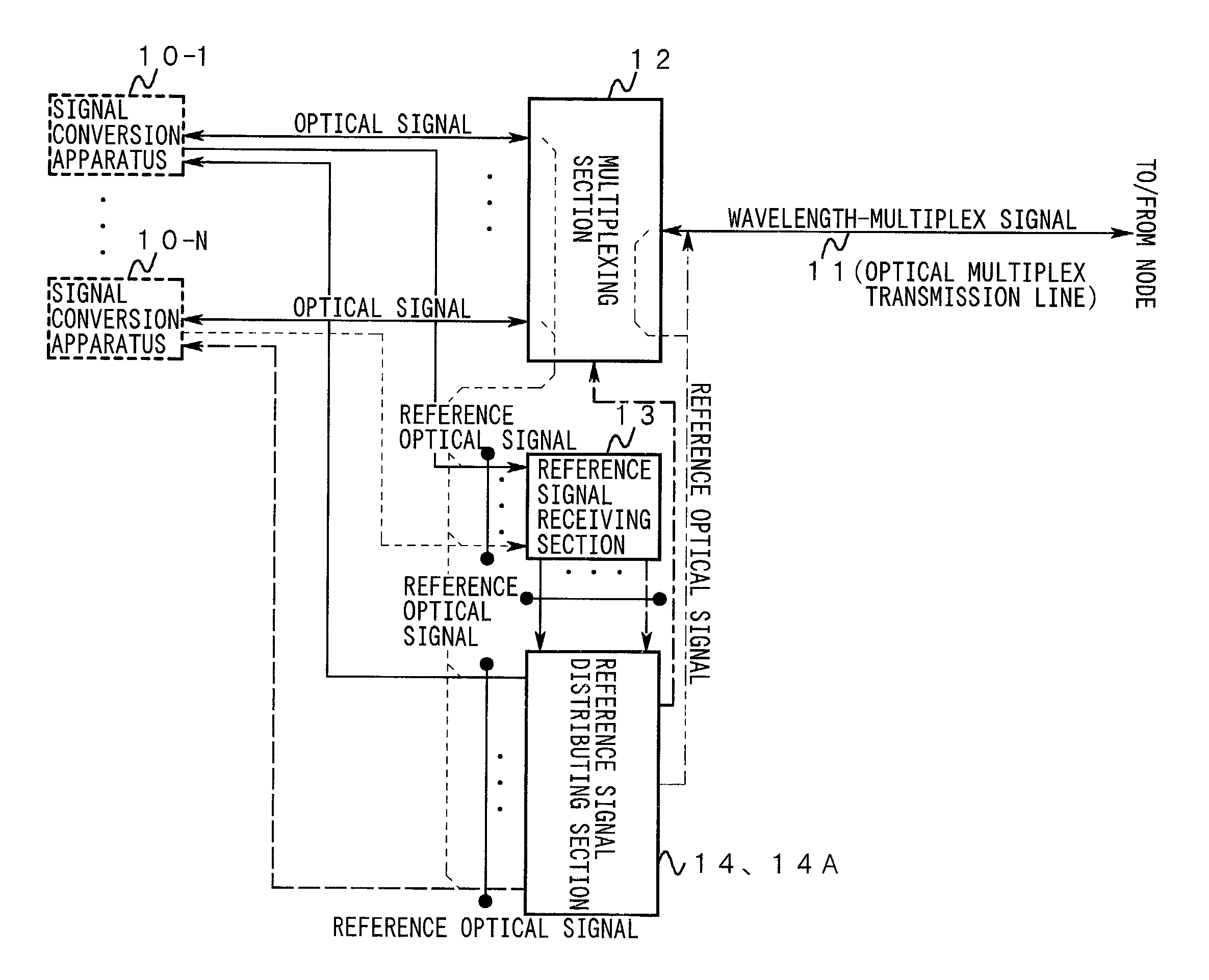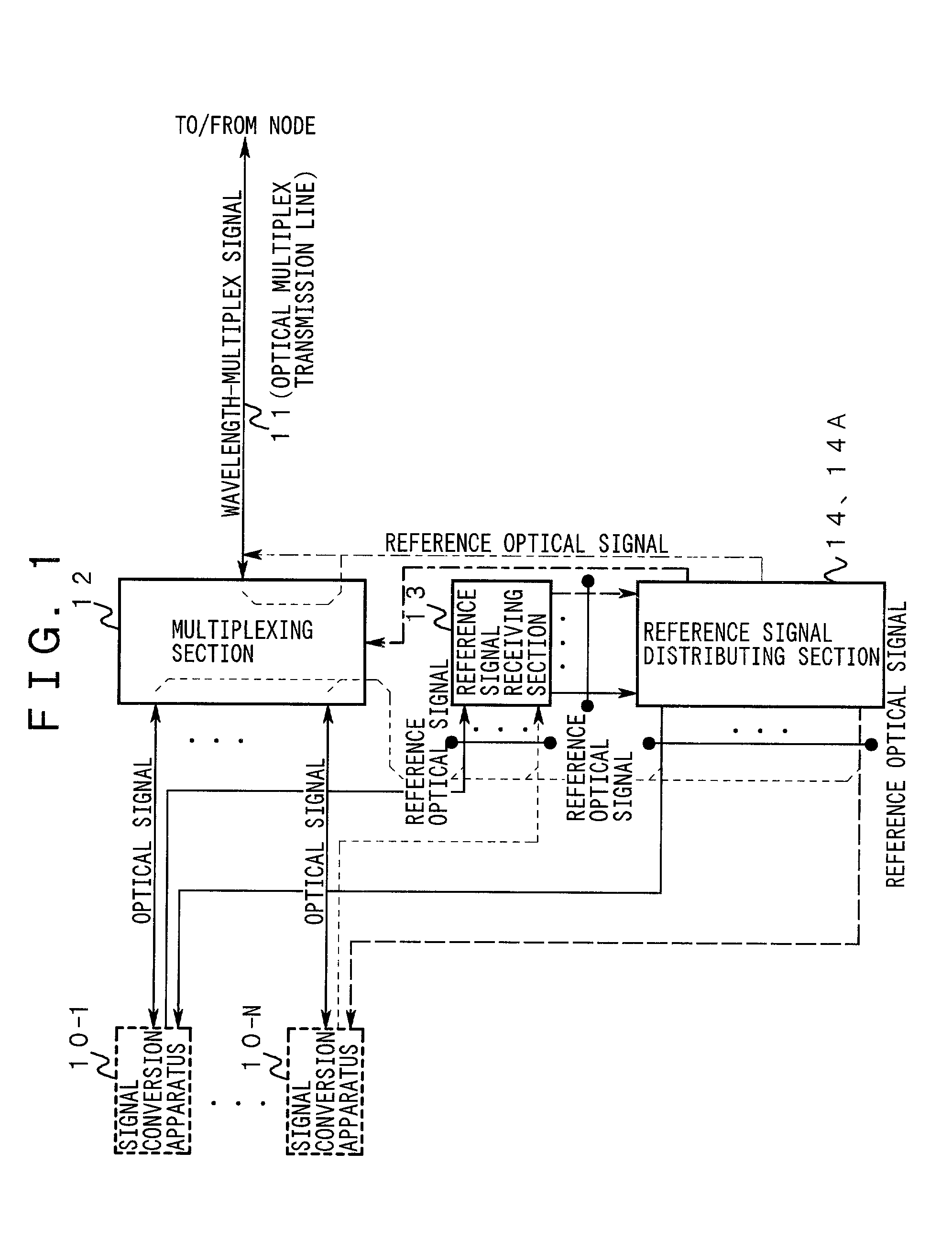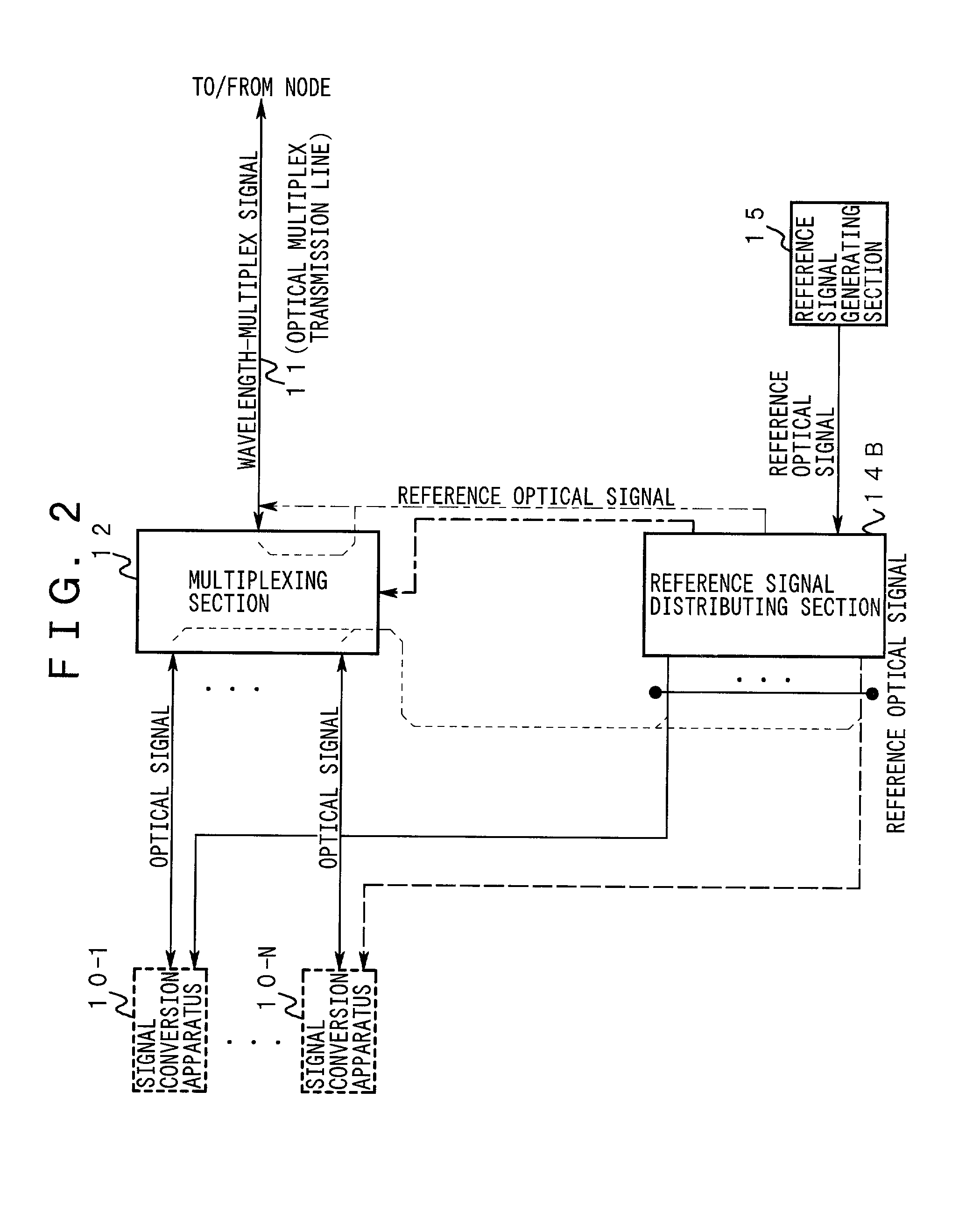Wavelength multiplexing apparatus and signal conversion apparatus
a signal conversion and multiplexing technology, applied in multiplex communication, transmission monitoring, instruments, etc., can solve the problems of complex wiring work (including wire binding), not necessarily shared, and difficulty in synchronizing with individual external clock signals. achieve the effect of low cost and maintain transmission quality at a high level
- Summary
- Abstract
- Description
- Claims
- Application Information
AI Technical Summary
Benefits of technology
Problems solved by technology
Method used
Image
Examples
first embodiment
[0298]FIG. 11 is a diagram showing the present invention.
[0299]This embodiment is characterized in that OEO converting parts 30-1 to 30-N are provided thereto instead of the OEO converting parts 110-1 to 110-N, a wavelength multiplexing part 31 is provided thereto instead of the wavelength multiplexing part 112, and an external clock signal is supplied only to the OEO converting part 30-1.
[0300]The structure of the OEO converting part 30-1 is different from that of the OEO converting part 110-1 in that the following elements are added thereto:[0301]an optical coupler 32-1 one of whose inputs is connected to an output of a wavelength converting part 126u-1 and whose output is connected to a corresponding multiplexing input of the wavelength multiplexing part 31,[0302]an EO converting part 33-1 whose input is connected to an output of a clock selecting part 130-1 and whose output is connected to the other input of the optical coupler 32-1,[0303]an optical filter 34-1 whose input is co...
second embodiment
[0342]FIG. 15 is a diagram showing the present invention.
[0343]The structure of this embodiment is characterized in that an OEO converting part 60-1 is provided instead of the OEO converting part 30-1 and a wavelength multiplexing part 61 is provided instead of the wavelength multiplexing part 31.
[0344]The following are structural differences between the OEO converting part 60-1 and the OEO converting part 30-1.[0345]The optical coupler 32-1 and the EO converting part 33-1 are not provided thereto.[0346]An output of a wavelength converting part 126u-1 is connected to a corresponding input of the wavelength multiplexing part 61.[0347]An optical amplifier 62-1 is provided in the wavelength converting part 126u-1.[0348]An output of a clock selecting part 130-1 is connected to a bias circuit of an LED 63-1 which supplies pumping light to the optical amplifier 62-1.[0349]An optical coupler 34A-1 is provided instead of the optical filter 34-1.[0350]A clock regenerating part 65-1 is provid...
third embodiment
[0368]FIG. 17 is a diagram showing the present invention.
[0369]This embodiment is characterized in that a wavelength multiplexing part 61A is provided instead of the wavelength multiplexing part 61.
[0370]The structure of the wavelength multiplexing part 61A is different from that of the wavelength multiplexing part 61 as follows:[0371]A selecting part 66 whose inputs are connected to clock terminals of all or a part of clock extracting parts 64-1 to 64-N (supposing that the inputs are connected to all of them for simplifying the explanation) is provided thereto.[0372]An output of the selecting part 66, instead of the clock output of the clock extracting part 64-1, is connected to a bias circuit of an LED 67.
[0373]Hereinafter, the operation of this embodiment will be explained.
[0374]In this embodiment, not only an OEO converting part 60-1, but also OEO converting parts 60-2 to 60-3 respectively supply an upstream optical signal in parallel, whose intensity is modulated according to t...
PUM
 Login to View More
Login to View More Abstract
Description
Claims
Application Information
 Login to View More
Login to View More - R&D
- Intellectual Property
- Life Sciences
- Materials
- Tech Scout
- Unparalleled Data Quality
- Higher Quality Content
- 60% Fewer Hallucinations
Browse by: Latest US Patents, China's latest patents, Technical Efficacy Thesaurus, Application Domain, Technology Topic, Popular Technical Reports.
© 2025 PatSnap. All rights reserved.Legal|Privacy policy|Modern Slavery Act Transparency Statement|Sitemap|About US| Contact US: help@patsnap.com



